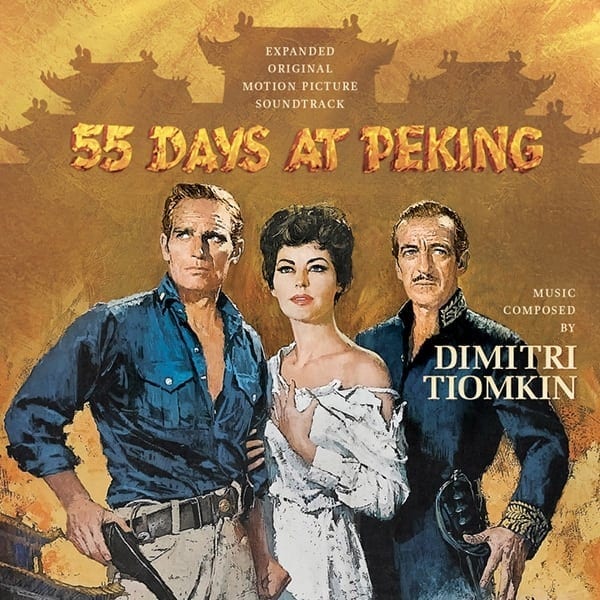Solutions or Scapegoating? Straight Talk About China & Fentanyl
 itnesses to HistorY
itnesses to HistorY
CALEB T. MAUPIN
The crisis of opiate addiction is very real in the United States. In 2015, more Americans died from drug overdoses than gun violence. According to the Washington Post: “Opioid deaths continued to surge in 2015, surpassing 30,000 for the first time in recent history… That marks an increase of nearly 5,000 deaths from 2014. Deaths involving powerful synthetic opiates, like fentanyl, rose by nearly 75 percent from 2014 to 2015.”
Who is to blame the crisis? Almost all experts agree that roots of the crisis began in the 1990s when American pharmaceutical corporations began pushing pain-killer medications, and encouraging doctors to over prescribe them, hoping to drive up their profits. The US Center for Disease Control is now urging physicians across the USA to reduce the use of painkillers, as their chronic over-prescription in the last decades has been fueling the crisis.
The problem of overuse of painkillers was further exacerbated by the NATO invasion of Afghanistan in 2002, which resulted in a huge boom in poppy production across the country. The poppy fields of Afghanistan are now flooding the global market, driving the price of heroin lower than ever.
Predictably, certain voices in America’s for-profit media have chosen not to blame powerful money hungry drug companies pushing their products or US “regime change” operations overseas for the epidemic which is destroying so many American lives. Instead, they have found a convenient scapegoat, the People’s Republic of China.
The basis for blaming China for the heroin epidemic is the claim that Fentanyl, a synthetic opiate, is increasingly prevalent across the United States and used by opiate addicts. Because a lot of legal, medical Fentanyl is manufactured in Chinese factories, it is somehow deduced that the drug is being intentionally pushed onto the United States by a cabal of evil Chinese scientists, Chinese gangsters, or the Communist-led Chinese government itself, and that this sinister conspiracy originating on the other side of the planet is somehow the cause of the opiate crisis. This dark fairy tale, a great example of “fake news” or a conspiracy theory if ever, simply does not add up when basic facts about the heroin crisis and China are considered.
Fentanyl: Not A “Chinese Drug”
First of all, Fentanyl is not a “Chinese Drug” as certain voices have tried to label it. Fentanyl was invented by an Italian scientist named Paul Janssen. Janssen started his work at the University of Cologne in Germany, but it was while he was working in Belgium that he invented the synthetic opiate which was eventually introduced for medical use as a painkiller. Janssen’s Belgian drug company, that introduced Fentanyl to the world as a legal, pharmaceutical product was eventually bought out by Americans. Today, the drug inventors who brought Fentanyl into the world have been absorbed into the Wall Street “Fortune 500” medical giant known as“Johnson & Johnson.”
While a lot of legal, medical Fentanyl is manufactured in mainland China, like the United States, China has outlawed all non-medical use of the substance. Narcotics trafficking is punishable by death in China, and international bodies commonly criticize the People’s Republic for how harshly its anti-drug laws are enforced. US and Chinese drug enforcement officials routinely cooperate in efforts against drug cartels. Bill Brownfield, the US assistant secretary of state for international narcotics and law enforcement has stated: “I actually believe on matters of narcotics and drugs, the US and China cooperate extremely well.”
Rarely is Fentanyl ever used by itself for recreational purposes. Pure Fentanyl is certainly used in hospital rooms and by those prescribed it for chronic pain, but when Fentanyl is used recreationally by addicts, it is almost always mixed with non-synthetic, poppy derived heroin. Dealers will cut heroin with Fentanyl as a method of saving money, and expanding their inventory.
In 2014, a total of 31,271 people in the United States died from opiate overdoses. Only 4,200 of those deaths, less than 14% actually involved Fentanyl, and in almost every single case, the Fentanyl was mixed in with other, non-synthetic poppy-based opiates. Recreational drug users who consume Fentanyl do so by accident, thinking they are consuming pure heroin.
The smash TV hit Breaking Bad was based on the illegal traffic of synthetic methamphetamines.
While the DEA suspects that some of the chemical components necessary to create Fentanyl often originate in China, statistics show that a lot of Fentanyl is being manufactured in the United States. Across the country, police have noticed a rise of domestic manufacturing of synthetic opiates. After all, synthetic opiates do not require poppy fields, smuggling units, or any of the other more risky aspects of the drug world. Anyone with the proper chemicals and a laboratory can create synthetic opiates. When making Fentanyl, no poppy fields or Chinese people are required in the process.
Domestic Fentanyl production facilities have been found across the United States. For example, near the post-industrial city of Syracuse New York, a lab for creating synthetic opiates was discovered inside what looked like a typical family home, just a few blocks away from a local YMCA. The police found over 6,000 doses in the house, along with $4000 in cash.
China’s Revolution “Wiped Out” Drug Addiction
The xenophobic narrative about China, the primary culprit in the epidemic of addiction plaguing the United States, is just not consistent with reality. Yes, it is easier to blame “the yellow peril” or the “red dragon” on the other side of the world for crisis plaguing middle America, which was wrought by greed and militarism among our own population. However, reality tells a different than story.
Prior to 1949, China was one of the most heroin and opium addicted societies in the world. The British empire famously waged two “opium wars,” forcing the Emperors to allow the importation of narcotic substances. The first US military intervention on the Chinese mainland was done in 1900 when the US Marine Corps was sent to crush a group of Chinese nationalists called “the boxers” who were lynching drug dealers and saw drug addiction as a scourge imposed on their country by foreign imperialists.

The 1963 blockbuster 55 Days at Peking, focusing on the Chinese nationalist Boxer rebellion, largely glorifies the European powers and Japan, hiding the main reason for the uprising, the British desire to keep the opium trade going in China.
The Chinese Communist Party effectively wiped out drug addiction on the mainland during the first years of the People’s Republic. The public was mobilized in a mass campaign to fight against substance abuse. According to “Opium: A History” by Martin Booth “When the Communists took over, Mao Zedong wiped out opium and addiction. China was clean for over forty years with only pharmaceutical opium being produced.”
The term “brainwashing” is derogatory in the United States, but it originally referred to the Communist Party’s process of rehabilitating criminals, anti-communists, drug addicts, prostitutes, and others after the 1949 revolution. A more accurate translation of the term is “thought reform” and after China’s revolution, the government effectively rehabilitated millions of people who they argued had been criminalized under the old society.
While there has been a slight revival of China’s drug problem in recent years, the problem facing China is exponentially smaller than what it faced in the period preceding the birth of “New China” in 1949. An article from the LA Times in 1990 described anti-drug efforts by the Chinese government reporting that: “Opium addiction, once widespread in China, was virtually wiped out after the 1949 Communist revolution.” The article goes on to quote Beijing Youth News which proclaimed: ““This devil, stamped out years ago, has reappeared in our country like a ghost… It has not yet generally spread, but it will bring disaster if we don’t stop it.”
Drugs & De-Industrialization
When Chinese Communists speak of their history, they refer to the scourge of drug addiction not as moral failing on the part of recreational users or even as random medical calamity befalling unfortunate individuals. In China’s narrative of history, drugs were something imposed on the country by foreign bankers and western monopolists. Drugs served the purpose of weakening China’s people, making them subservient, and preventing them from developing their own, independent economy. While opium and heroin addiction is no longer prevalent in China, steel manufacturing, high speed trains, advanced computer systems, and satellites are.
In the de-industrialized rust belt of the United States, many Americans voted for Donald Trump because they hoped he would fix the economy, and make the US once again a booming center of industrial production with a rising standard of living. It is these very de-industrialized midwestern states that have been hardest hit by the heroin crisis, as well as suicide, mental illness, and other “diseases of despair” associated with an overall decline in living standards.
Rather than blaming China for the drug problems, perhaps we should learn from the methods used by the Chinese people to wipe out drug addiction, and raise millions of people out of poverty. If history shows us anything, it is that solutions are a thousand times more valuable than scapegoats.
CROSSPOSTED AT http://journal-neo.org/2017/01/05/solutions-or-scapegoating-straight-talk-about-china-fentanyl-2/
 Is an American journalist and political analyst. Tasnim News Agency described him as "a native of Ohio who has campaigned against war and the U.S. financial system." His political activism began while attending Baldwin-Wallace College in Ohio. In 2010, he video recorded a confrontation between Collinwood High School students who walked out to protest teacher layoffs and the police. His video footage resulted in one of the students being acquitted in juvenile court. He was a figure within the Occupy Wall Street protests in New York City. Maupin writes on American foreign policy and other social issues. Maupin is featured as a Distinguished Collaborator with The Greanville Post. READ MORE ABOUT CALEB MAUPIN HERE.
Is an American journalist and political analyst. Tasnim News Agency described him as "a native of Ohio who has campaigned against war and the U.S. financial system." His political activism began while attending Baldwin-Wallace College in Ohio. In 2010, he video recorded a confrontation between Collinwood High School students who walked out to protest teacher layoffs and the police. His video footage resulted in one of the students being acquitted in juvenile court. He was a figure within the Occupy Wall Street protests in New York City. Maupin writes on American foreign policy and other social issues. Maupin is featured as a Distinguished Collaborator with The Greanville Post. READ MORE ABOUT CALEB MAUPIN HERE.
Note to Commenters
Due to severe hacking attacks in the recent past that brought our site down for up to 11 days with considerable loss of circulation, we exercise extreme caution in the comments we publish, as the comment box has been one of the main arteries to inject malicious code. Because of that comments may not appear immediately, but rest assured that if you are a legitimate commenter your opinion will be published within 24 hours. If your comment fails to appear, and you wish to reach us directly, send us a mail at: editor@greanvillepost.com
We apologize for this inconvenience.
Nauseated by the
vile corporate media?
Had enough of their lies, escapism,
omissions and relentless manipulation?
Send a donation to
The Greanville Post–or
But be sure to support YOUR media.
If you don’t, who will?
![]()
=SUBSCRIBE TODAY! NOTHING TO LOSE, EVERYTHING TO GAIN.=
free • safe • invaluable
[email-subscribers namefield=”YES” desc=”” group=”Public”]

